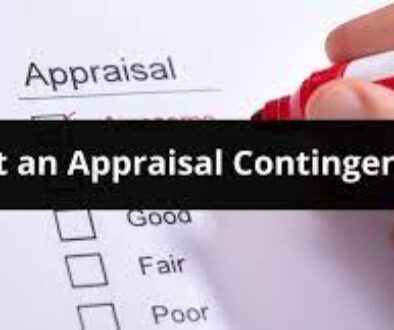Homeowners Insurance Deductible
When you buy a house, your mortgage lender will require you to purchase homeowners insurance to ensure their interest in the property is protected in the event of a disaster. The cost of this insurance will depend on a number of factors, including how much your homeowners insurance deductible costs – something you can choose.
This is an important part of your insurance policy and your finances. You need to fully understand what a home insurance deductible is and how to choose the right one.
What Is Homeowners Insurance Deductible?
A homeowners insurance deductible is the amount of money a homeowner must pay out of pocket before home insurance coverage kicks in. When the insurance company pays the claim, it will be for the total amount of the damage minus the amount of the deductible.
You won’t pay your deductible to the insurance company like a bill. Instead, it’s subtracted from the amount the insurance company pays. You pay the rest of the money (your deductible) to the person or company hired to fix the damage.
For example, if your deductible is $500 and you file an insurance claim for $5,000 worth of damage to the siding of your home, your insurance company will pay you $4,500 for that claim. The remaining $500 (your deductible) will be paid by you, out of pocket, to the siding company repairing the damage.
Your deductible is paid before the insurer pays its part. That means if the cost of damage to your home is less than your deductible, the insurance company wouldn’t pay anything. In that case, you wouldn’t go through the work of filing an insurance claim. Instead, you would just pay the amount due. For example, if the cost of damage to your home is $350 and your deductible is $500, you would just pay the $350 out of pocket.
Keep in mind that homeowners insurance deductibles are not like health insurance deductibles, which have a max out-of-pocket amount you pay in one year. When it comes to homeowners insurance deductibles, you’re responsible for paying a deductible on a per-claim basis. If your home suffers more than one damaging event, you’re responsible for paying the deductible on each of those claims.
There’s one exception to this rule. In the state of Florida, there is only one deductible you must pay for hurricane damage per hurricane season, instead of per claim or per storm.
Types Of Homeowners Insurance Deductibles
On your homeowners insurance policy, you’ll find two types of deductibles: standard and percentage.
Standard Deductible
The standard deductible is a fixed dollar amount, typically in the range of $500 – $2,000. When you have a standard deduction, the amount you’ll pay stays the same, no matter the cost of damage. This is what you’ll pay for most of your insurance claims.
There is also another type of deductible, typically set up for specific claims. This is known as the percentage deductible.
Percentage Deductible
Percentage deductibles are usually saved for wind-, hail- and hurricane-related claims. It’s a percentage of your home’s insured value. These deductibles are typically between 1 – 10% of that value. So, if your home is insured for $300,000 and your deductible is 1%, you would pay $3,000 out of pocket. If you made a claim for $10,000, your insurance would cover $7,000.
What Is A Disaster Deductible?
While wind, hail and hurricane damage are covered under your standard insurance policy, insurance for certain natural disasters must be purchased separately. These disasters have different deductible rules and your coverage or requirements to have them may depend on where you live. Here’s a little more info on a few common disasters that aren’t covered by standard insurance policies.
Most standard insurance policies don’t cover earth movement, which includes earthquakes,mudslides and sinkholes. When it comes to sinkholes, one exception may be if you live in Florida, where insurers are legally required to offer some sort of protection from ground cover collapse. However, that may not always cover sinkholes, so it’s best to get more information from your insurer.
When it comes to these deductibles, they are usually percentages of the insured value of the home. If you live in areas that are more prone to earthquakes, the minimum percentage deductible may be higher. For example, the minimum deductible for most California homes is around 15%.
Another disaster that is not typically covered by most insurers is flooding. And though it isn’t covered on a standard insurance policy, it’s a requirement for those who live in high-risk flood areas to have this type of insurance. If you aren’t required to have flood insurance, you may still want to consider getting it.
When it comes to purchasing flood insurance,there are two types: National Flood Insurance Program (NFIP) and private flood insurance. Most plans offer two different types of deductibles, one for damage to the building itself and one for damage to the contents inside the building. These deductibles can be anywhere from a minimum of $1,000 to a maximum of $10,000 each.
How To Choose The Right Deductible
Choosing a deductible is a matter of weighing the short-term cost of a deductible against the long-term cost of a policy. It also means taking a look at your finances to determine what you can afford, should you need to pay your deductible unexpectedly.
Understand How Your Deductible Affects Your Premium
When you have homeowners insurance, you’ll need to pay a premium. An insurance premium is a monthly or annual payment you make to keep yourself insured. Depending on the way your loan is set up, your homeowners insurance may be collected in your monthly mortgage payment, held in an escrow account and then paid by your lender. If you’re not required to have an escrow account, you’ll pay your homeowners insurance directly to your insurer.
There are some factors that go into your premium, one of them being risk. The higher the risk to your insurer, the higher your premium may be. One part of assessing the risk is determining how likely you are to make a claim. To determine this, the insurer will look at things like how your home is built, the age of your home and the insurance claims history in your area.
Another part of assessing the risk of insuring your home is determining how much it’s going to cost the insurer to pay your claims. The more money you’re paying out of pocket, the less your insurer must pay. That’s why paying a higher deductible can lower your premium.
While that can save you money monthly or yearly, a high deductible can leave you in financial distress should you suffer damage or loss and you don’t have an emergency fund or other money to cover the cost. Whatever deductible you choose, make sure you have at least that amount saved should you need to use it.
Key Takeaways
A homeowners insurance deductible is a fixed amount of money you pay out of pocket for damages to your home before your insurance pays the rest. The higher your deductible, the less you pay on your insurance premium. When determining your deductible, consider what a high, unexpected cost could do to your finances.




